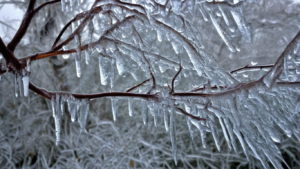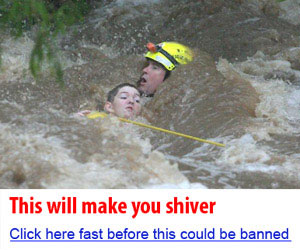How to Survive a Bear Attack – A Comprehensive Guide to Outsmarting Nature’s Giants
Imagine you’re out in the wilderness, the beauty of nature surrounding you, when suddenly you find yourself face to face with a bear. Your heart races, adrenaline pumping through your veins. What do you do?
Our guide on ‘How to Survive a Bear Attack’ is your lifeline, equipping you with the essential knowledge and strategies to handle such a scenario. We delve into the world of bears, their behaviors, and the most effective tactics to employ when an encounter turns threatening.
Stay tuned as we unravel the secrets to surviving a bear attack, ensuring you’re prepared for any unexpected encounters on your wilderness adventures. Remember, knowledge is your most powerful tool in the face of danger.


What Kind Of Bears Attack Humans?
In the wilderness, three species of bears are known for their potential to attack humans: the Grizzly Bear, the Black Bear, and the Polar Bear.
Grizzly Bears, also known as Brown Bears, are infamous for their unpredictability and aggressive behavior when they feel threatened. They are predominant in North America and parts of Europe and Asia. The key to surviving a Grizzly attack is to play dead and protect your vitals.
Black Bears, found primarily in North America, are generally less aggressive than Grizzlies. However, they can pose a significant threat when they feel cornered or when a human comes between a mother and her cubs. If faced with a Black Bear, it is recommended to make yourself appear larger and make loud noises to scare it away.
Polar Bears, the largest of the bear species, are native to the Arctic Circle. They are known to be extremely aggressive and unpredictable. Unlike other bears, Polar Bears are more likely to view humans as prey due to their carnivorous diet. In the unlikely event of a Polar Bear attack, the best survival strategy is to fight back with everything you have.
Remember, the key to surviving any bear encounter is to avoid it in the first place. Maintain a safe distance, make noise to alert bears of your presence, and store food properly to avoid attracting them.
How To Identify A Bear’s Aggression?
Understanding a bear’s aggression is crucial to surviving a bear attack. The most apparent sign of aggression is a bear standing on its hind legs. However, this can be misleading as bears often stand to get a better view of their surroundings, not necessarily to show aggression.
Direct eye contact is another sign of aggression. A bear making direct eye contact with you, coupled with huffing and clacking its teeth, signals a warning. Also, pay attention to a bear’s ears. If they’re laid back, it’s a sign the bear feels threatened and may attack.
A bear stomping its feet or slapping the ground is another sign of aggression. If you see this, it’s time to back away slowly, avoiding direct eye contact.
Here are a few more signs to watch for:
- Charging: A bear may charge as a bluff or as an actual attack. If it’s a bluff, the bear will stop or veer off at the last second.
- Growling: This is a clear sign of aggression. If a bear growls at you, it’s time to use your bear spray and prepare for a possible attack.
- Pursuit: If a bear follows you, it’s showing predatory behavior. This is a dangerous situation where you should fight back if attacked.
Remember, each bear encounter is unique. The best course of action is to avoid bear encounters altogether by making noise while hiking, traveling in groups, and properly storing food when camping.
What To Do If A Bear Approaches You?
In the unfortunate event that a bear approaches you, it’s crucial to know how to react. The first step is to identify the species of the bear, as different species may require different strategies. For instance, grizzly bears and black bears behave differently during confrontations.
If you encounter a black bear, make yourself appear larger by raising your hands and standing on your toes. In contrast, if it’s a grizzly, avoid direct eye contact, which they might perceive as a threat.
Regardless of the species, it’s important to stay calm and never run. Running can trigger a bear’s predatory instincts. Instead, back away slowly and speak in a calm, assertive voice.
- Carry bear spray and know how to use it. Bear spray is a potent deterrent when used correctly.
Remember, most bears prefer to avoid human interaction. By making your presence known – through talking or making noise – you can often deter a bear from approaching.
In the rare case that a bear attacks, fight back vigorously. Use any available objects as weapons, aiming for the bear’s face and muzzle. Remember, your safety is paramount. Knowing how to respond can make all the difference in a bear encounter.
Is Playing Dead Effective Against Bear Attacks?
When it comes to surviving a bear attack, many people believe that playing dead can be an effective strategy. However, it’s essential to understand that this tactic doesn’t work with all types of bears. Grizzly bears, for instance, are known to halt their attack when they perceive that the threat has been neutralized. Hence, playing dead may convince a grizzly bear that you’re not a threat, potentially saving your life.
On the contrary, this strategy can be counterproductive with other bear species like black bears. Black bears are more curious and less aggressive than grizzlies, and playing dead might incite more interest rather than deter them. Instead, experts recommend making yourself appear larger and making loud noises to scare them off.
Remember, the key to surviving a bear attack is to accurately identify the bear species. Here are a few quick tips:
- Grizzly bears have a pronounced shoulder hump, while black bears do not.
- Black bears have taller ears in comparison to grizzlies.
- Grizzly bears have shorter, rounder ears while black bears have longer, more pointed ones.
Understanding these differences can help you decide the best course of action during a bear encounter. Always prioritize avoiding bear encounters by making noise while hiking, keeping your camp clean, and storing food properly. In the case of an inevitable bear encounter, remember these tips and respond accordingly.
How To Use Bear Spray Correctly?
Bear spray is a crucial tool when it comes to surviving a bear attack. It’s a non-lethal deterrent designed to stop aggressive behavior in bears. To use it correctly, the first step is to carry it in an easily accessible place. You don’t want to be fumbling around for your bear spray when a bear is charging at you.
Understanding the range of your bear spray is also crucial. Most bear sprays have a range of 12-30 feet, but always check the label on your specific can. When a bear approaches, aim the bear spray slightly down and towards the bear, considering the wind direction.
Avoid spraying too early. Wait until the bear is within the effective range of your bear spray, then unleash a cloud of spray between you and the bear. The goal is to create a barrier that deters the bear from continuing its charge.
Here are some key points to remember:
- Carry bear spray in an easily accessible place.
- Understand the range of your bear spray.
- Consider the wind direction when aiming.
- Wait until the bear is within range before spraying.
Remember, bear spray is not a repellent. Do not apply it to yourself or your gear. It’s meant to deter aggressive bears, not attract them. Also, it’s important to note that bear spray should be your last resort. Always try to avoid bear encounters by making noise and traveling in groups. If you find yourself in a bear encounter, try to back away slowly and avoid direct eye contact. Only use bear spray if the bear behaves aggressively or approaches too closely. This will help ensure your survival in a bear attack.
Can Noise Scare Away Bears?
When it comes to surviving a bear attack, one common question is whether noise can scare away bears. The answer is yes, but with a caveat. Noise can indeed deter bears, but it’s essential to understand that the effectiveness of noise depends on the type of bear and the situation.
Black bears, for instance, tend to be more timid and are more likely to be scared off by loud noises. However, grizzly bears may not be as easily frightened. If you encounter a grizzly, making noise might alert the bear to your presence, but it might not necessarily scare it away.
The use of noise-making devices, such as bear bells or air horns, is often recommended when hiking in bear country. However, it’s crucial to remember that these devices should be used as preventive measures and not as your only line of defense in the event of a bear encounter.
Here are some tips to remember:
- Always carry bear spray. It’s the most effective deterrent against bear attacks.
- Make noise when hiking to alert bears of your presence. This can help avoid surprising a bear, which could lead to an attack.
- If you do encounter a bear, speak in a calm, assertive voice while slowly backing away. Running can trigger a chase response.
Remember, every bear encounter is unique, and there’s no guaranteed method to scare away a bear. The best strategy is to avoid encounters by being aware of your surroundings and following bear safety guidelines.
What Attracts Bears To Campsites?
Bears are naturally curious creatures, drawn to campsites by a variety of factors. The most significant of these is the scent of food. Bears have an incredible sense of smell, able to detect odors from miles away. This means that any food, even if it’s well-packaged or in a sealed container, can attract a bear.
Garbage is another major attractant. The smell of discarded food and waste can lure bears into campsites, even if the garbage is properly disposed of. It’s important to remember that bears are intelligent and have been known to associate human areas with easy meals.
Noise can also attract bears. They are curious animals and loud sounds or unusual noises can pique their interest. This includes the sound of people talking, music, or even the rustling of a tent.
Another factor is the presence of female bears during mating season. Male bears may be drawn to campsites in their pursuit of a mate, especially if the campsite is located near a bear’s natural habitat.
- Food
- Garbage
- Noise
- Female bears during mating season
Remember, the key to surviving a bear attack is to avoid attracting bears in the first place. Keep your campsite clean, store food and garbage properly, and be aware of your surroundings.
How To Treat Injuries After A Bear Attack?
In the aftermath of a bear attack, it is crucial to address any injuries promptly. Bear attack injuries can vary in severity, from minor scratches to serious wounds. The first step is to assess the situation and check for any life-threatening injuries.
If the victim is unconscious, perform CPR immediately. For bleeding wounds, apply pressure with a clean bandage or cloth to stop the bleeding. Do not try to clean the wound in the wilderness, as it may introduce more bacteria into the wound.
In case of broken bones, immobilize the area using a splint or any rigid material. Avoid moving the victim unnecessarily. It’s essential to keep the victim calm and reassured, as shock and panic can exacerbate the situation.
Once the immediate danger has passed, seek professional medical help as soon as possible. Bear attack victims often require antibiotics to prevent infection, and in severe cases, surgery may be required.
Remember, the best way to treat injuries after a bear attack is to avoid them in the first place. Understanding bear behavior and taking precautions when in bear territory can significantly reduce the risk of bear attacks.
In the unfortunate event of a bear attack, knowing how to treat injuries can make a significant difference. But remember, the information provided here is a guide and does not replace professional medical advice.
Wrapping Up: Surviving a Bear Attack
Throughout this post, we’ve delved into the key points on how to survive a bear attack. We’ve explored the types of bears that are most likely to attack humans and how to identify signs of aggression in these wild creatures. We’ve also provided critical steps to take if a bear approaches you, including the controversial strategy of playing dead.
We’ve shared expert advice on the correct use of bear spray, a crucial tool in deterring bear attacks. We’ve also discussed the effectiveness of noise in scaring away bears and highlighted what attracts bears to campsites, enabling you to make your outdoor adventures safer.
Moreover, we’ve addressed how to treat injuries post a bear attack. This knowledge is not only useful for bear encounters but also serves as a general guide for wilderness first aid.
Remember, knowledge is your best defense against bear attacks. Keep these tips in mind, stay alert, and respect the wildlife. As our understanding of bears continues to evolve, so too will the strategies for surviving bear encounters. So, it’s essential to stay informed about the latest research and trends. Stay safe and enjoy your outdoor adventures responsibly.




